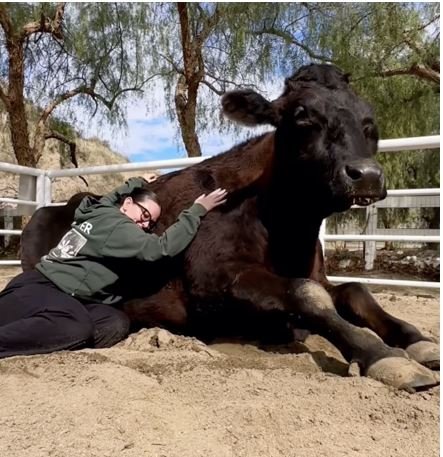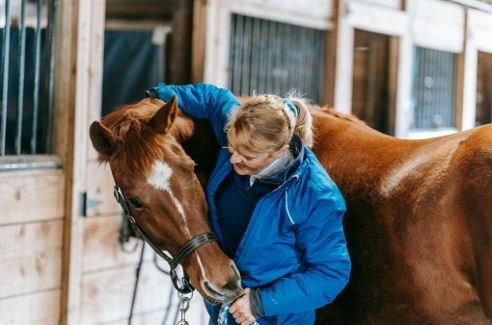
Not all therapy happens in an office, and not all healers walk on two legs. As more people look for alternatives to traditional mental health treatments, animals play a growing role in healing. From golden retrievers comforting hospital patients to horses helping veterans recover from trauma, animal-assisted therapy (AAT) is a proven path to emotional well-being. But one form of this therapy is quietly making waves for its deeply grounding, uniquely powerful effect: cow hugs. Yes—cows. Gentle, soulful, slow-moving creatures whose simple presence has helped people find calm, connection, and even closure.
Here’s how Cow Hug Therapy® stacks up against more conventional AAT—and why this humble barnyard practice might just be the therapy you didn’t know you needed.
Understanding Traditional Animal-Assisted Therapy
Traditional AAT involves structured interactions between individuals and trained animals, facilitated by professionals to achieve specific therapeutic goals. Common therapy animals include:
- Dogs: Known for their loyalty and empathy, therapy dogs are often used to comfort patients in hospitals, nursing homes, and disaster areas.
- Horses: Equine-assisted therapy leverages the horse’s responsiveness to human behavior, aiding in the treatment of PTSD, addiction, and developmental disorders.
These animals assist in improving physical, emotional, and social functioning, offering benefits such as lowered blood pressure, reduced anxiety, and enhanced social interaction.
Introducing Cow Hug Therapy®
Cow Hug Therapy, also known as cow cuddling, is a form of AAT where individuals spend time hugging and interacting with cows. Originating from practices in the Netherlands, this therapy is based on the calming presence of cows, whose slower heart rates and warm bodies can induce a sense of peace and relaxation in humans.
Unique Benefits of Cow Hug Therapy
- Deep Relaxation: The act of hugging a cow can lead to a meditative state, reducing stress and promoting mindfulness.
- Emotional Healing: Cows’ gentle nature provides a non-judgmental space for individuals to process emotions and trauma.
- Physical Comfort: A cow’s warmth and steady heartbeat can have a soothing effect, similar to the comfort derived from weighted blankets.

The Gentle Barn: A Sanctuary for Healing
The Gentle Barn, a nonprofit organization with locations in California and Tennessee, exemplifies the transformative power of Cow Hug Therapy. Since its inception in 1999, The Gentle Barn has rescued and rehabilitated abused animals, integrating them into therapeutic programs for humans.
At The Gentle Barn, visitors engage in Cow Hug Therapy sessions, connecting with cows that have overcome their traumas. This mutual healing experience fosters participants’ empathy, trust, and emotional growth.
Comparing Cow Hug Therapy and Traditional AAT
| Aspect | Traditional AAT | Cow Hug Therapy |
| Animals | Dogs, Horses | Cows |
| Settings | Hospitals, Clinics, Rehabilitation Centers | Farms, Sanctuaries |
| Therapeutic Focus | Emotional Support, Physical Rehabilitation, and Social Skills | Deep Relaxation, Emotional Healing, and Mindfulness |
| Interaction Type | Activities, Exercises, Petting | Hugging, Sitting with, Gentle Touch |
| Ideal For | PTSD, Anxiety, Physical Disabilities | Stress, Trauma, Emotional Distress |
From Cortisol to Calm: The Neuroscience of Animal-Assisted Therapy
Research supports the efficacy of both traditional AAT and Cow Hug Therapy. Studies have shown that interactions with animals can lead to:
- Reduced Cortisol Levels: Lowering stress hormones in the body.
- Increased Oxytocin: Enhancing feelings of bonding and trust.
- Improved Mood: Alleviating symptoms of depression and anxiety.
Specifically, Cow Hug Therapy has been noted for its ability to foster mindfulness and a sense of meaningfulness, providing a unique avenue for emotional healing.
Who Benefits Most from Cow Hug Therapy?
While both traditional Animal-Assisted Therapy (AAT) and Cow Hug Therapy offer emotional and psychological benefits, they often serve slightly different needs—and personalities.
Cow Hug Therapy is especially impactful for individuals experiencing emotional exhaustion, grief, or trauma. The experience of leaning into a warm, steady-bodied animal with no expectations offers something rare: unconditional presence. For people who are touch-deprived, anxious, or overwhelmed by fast-paced environments, cow hugging provides a deep sense of calm and grounding. It’s also ideal for those who may be hesitant about traditional talk therapy or struggle to articulate their feelings. Sometimes, silence beside a gentle giant says more than words ever could.
Traditional AAT, on the other hand, may be more appropriate for individuals working on specific therapeutic goals—such as socialization, physical rehabilitation, or confidence building. Dogs and horses are often trained for structured interactions and exercises, offering more active, task-oriented sessions.
Ultimately, the right therapy depends on the individual, but for many, Cow Hug Therapy is an unforgettable first step toward emotional healing.
A New Kind of Connection, A New Kind of Care
While traditional animal-assisted therapy continues to offer significant benefits across various settings, Cow Hug Therapy presents a distinctive and profound healing experience. By embracing the gentle presence of cows, individuals can find solace, emotional release, and a deeper connection to themselves and the world around them.